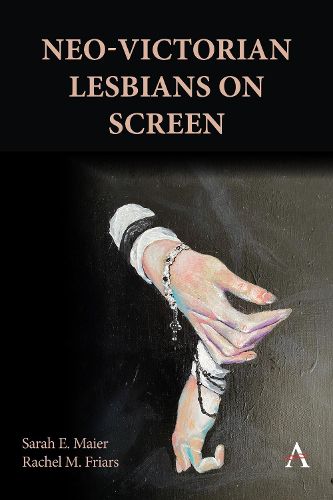Readings Newsletter
Become a Readings Member to make your shopping experience even easier.
Sign in or sign up for free!
You’re not far away from qualifying for FREE standard shipping within Australia
You’ve qualified for FREE standard shipping within Australia
The cart is loading…






In Neo-Victorian Lesbians on Screen, Maier and Friars argue that the on-screen portrayal of lesbians situated in the long nineteenth century across various countries is at the very least a dual task; the imperative project of revoicing lesbian silence and female companionship is complicated by the lack of and/or complex representation of such women in the past. The adaptations, with varying degrees of success, carefully manipulate the gaze of the viewer to illustrate both how crucial the act of looking proves to be for lesbian attachment in these films and how the viewer's own gaze changes the way the lesbian is represented. Maier and Friars consider the adaptations' awareness of the audience, and the ways in which the films implicitly acknowledge the stakes behind bringing the lesbian to life, as it were, in visual media. Because screen adaptations disrupt historical distance by literally picturing Victorian subjects via a medium they did not have, film adaptations of novels and biofictions, and original screenplays are challenged by the lesbian subject's vivid presence on screen. The lesbian is no longer a contained (neo)Victorian presence in the 'othered' nineteenth century, but her very existence on screen signals her effervescent modernity, which filmmakers alternately embrace or reject.
$9.00 standard shipping within Australia
FREE standard shipping within Australia for orders over $100.00
Express & International shipping calculated at checkout
In Neo-Victorian Lesbians on Screen, Maier and Friars argue that the on-screen portrayal of lesbians situated in the long nineteenth century across various countries is at the very least a dual task; the imperative project of revoicing lesbian silence and female companionship is complicated by the lack of and/or complex representation of such women in the past. The adaptations, with varying degrees of success, carefully manipulate the gaze of the viewer to illustrate both how crucial the act of looking proves to be for lesbian attachment in these films and how the viewer's own gaze changes the way the lesbian is represented. Maier and Friars consider the adaptations' awareness of the audience, and the ways in which the films implicitly acknowledge the stakes behind bringing the lesbian to life, as it were, in visual media. Because screen adaptations disrupt historical distance by literally picturing Victorian subjects via a medium they did not have, film adaptations of novels and biofictions, and original screenplays are challenged by the lesbian subject's vivid presence on screen. The lesbian is no longer a contained (neo)Victorian presence in the 'othered' nineteenth century, but her very existence on screen signals her effervescent modernity, which filmmakers alternately embrace or reject.